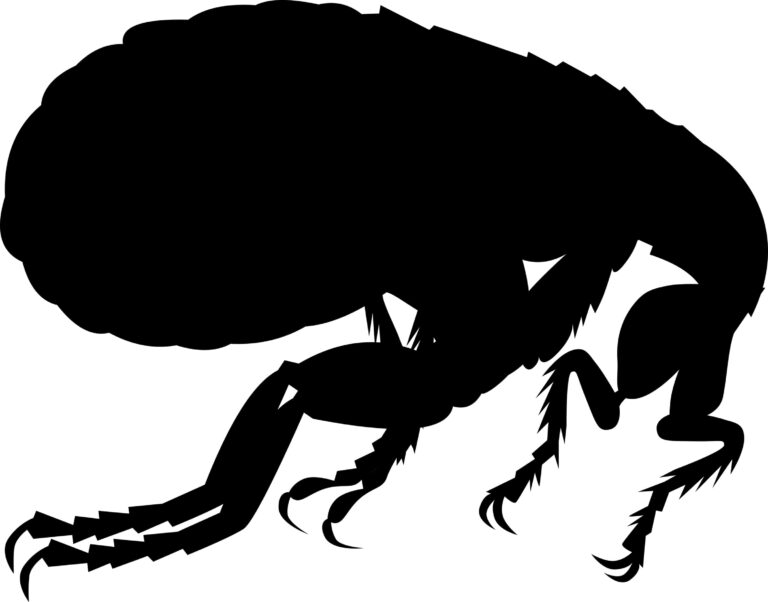
Did you know that the fleas you find on your cat or dog are just a small fraction of the whole flea population within your home? The eggs and larvae of fleas can hide within the fibers of your carpet and furniture. It’s not easy to conquer all the stages of the flea life cycle, so the earlier you start taking action, the safer your home and pets will be from flea infestation.
Here are some tips for getting rid of fleas on your pets and in your home.
What Is The Best Flea Protection Method?
The best flea prevention methods will help you treat all the fleas that may presently be on your furry friend and prevent future infestation. Some of the most effective flea protection methods include:
- Spraying the home, yard and pets
- Putting treated collars on your cats and dogs
- Using shampoos to wash the pet’s body
- Fumigating the home to kill all fleas in all life cycle stages such as eggs, larvae and pupae
Cleaning up the home with a vacuum cleaner to bring out fleas in all stages hiding in your carpet and rugs
For any prevention method to be effective, it needs to be repeated periodically.
What Are the Most Popular Flea Prevention Methods?
The two most common flea prevention methods are yard and carpet maintenance.
1. Maintain Your Yard
Don’t allow fleas to turn your property into a breeding ground. Keep your yard mowed and trim your shrubs. This work prevents fleas from having a place to hide.
Next, stop wild animals from bringing their fleas into your yard. Don’t leave bowls of cat or dog food outside because they can invite feral cats, raccoons and opossums. Trim high shrubs and trees that can allow wild animals to get into your attic. Close all openings to sheds, garages and crawl spaces where stray dogs, cats and other wild animals can nest. You can also use yard flea sprays to control the breeding of fleas in your yard.
2. Vacuum Your Carpets
The immature stages of fleas like to live in carpets and throw rugs, so you need to vacuum your home at least once a week. When you do so, don’t limit yourself to high-traffic areas like the center of the rooms. Fleas tend to avoid these areas and hide under cushions, furniture and baseboards. After vacuuming, change your vacuum bags or put a flea collar in each bag that can kill emerging fleas. If you have fleas in your home, dispose of the bag immediately.
What Flea Prevention Methods Work Best For Cats?
It’s better to protect your cat from having fleas than to allow her to endure the pain, itchiness and restlessness that come with flea infestation. Here are some effective was to keep your cat free of fleas.
1. Examine The Cat For Fleas
Look out for any movement in her fur. If you notice any small bugs bouncing off her fur coat, you need to kill fleas.
2. Use Spot-On Treatments
Spot-on treatments can form a barrier for the cat to prevent fleas from settling in the fur coat. Ask for recommendations from your vet and get instructions on how much to apply and the interval at which you should use it.
You may also use a flea collar.
3. Give The Cat A Chewable Pill

A chewable pill can kill fleas before they lay any eggs. It offers about 30 days of flea protection, and it also helps reduce the growth of fleas in the home.
4. Get Rid Of Fleas At Home
Since fleas can lay up to 50 eggs in one day, you need to constantly clean your home to prevent serious flea infestation. Vacuum the furniture regularly. Clean your carpets and cushions as well as crevices and cracks to remove eggs before they hatch. Always dispose of the vacuum bag properly and wash the canister with warm water when you’re done. In addition, remove fabrics from bedding and sofas and put them straight into the washing machine to wash them with hot water.
What Flea Prevention Methods Work Best For Dogs?
When you need to protect your furry friend from fleas, you can use a variety of shampoos, collars, sprays and chewable pills. Some of the most effective are oral products which are administered monthly or once every three months. These oral flea prevention methods have a speed-of-kill rate of just four hours which completely prevents fleas from being able to lay their eggs, whereas other topical solutions have a speed-of-kill rate of around 24-48 hours which means the adults have ample time to lay their eggs before they die. While topical products are easy to apply, studies show that the resistance typically lasts for ~14 days and has reduced efficacy for the rest of the month, meaning your pets are more susceptible to a flea infestation. Studies have also shown that pets using oral medications in a flea-infested home can get rid of all life cycles and clear the home of fleas when the pets consistently take the oral medication for three months and since the speed of kill rate is so fast, there’s no need to use foggers.
It’s very important to prevent flea infestation because your dog can become allergic to flea bites, and an infestation can lead to severe itching and hair loss.
How Can You Prevent Fleas In Your Home?
Preventing the growth of fleas at home is very important because for every flea you see, there are at least 50 to 100 hiding somewhere nearby. Fleas can release up to 40 eggs at once, so you need to be able to kill fleas before they start to lay eggs and reproduce. Here are some of the most effective ways to protect your home and your pets from fleas.
First, kill all the fleas in your home and yard by following specific steps:
- Vacuum rugs, carpets and furniture.
- Sweep wood and tile floors.
- Use anti-flea carpet spray on all your carpets and upholstery. Take special care to treat dark places and crevices.
- Fog your home. Top-of-the-line foggers will still be effective for up to seven months, which is enough to get rid of fleas in all life stages.
- Spray your yard. Use a yard spray to kill fleas before they get into your home or on your pet.
- To ensure that you’ve killed fleas in all the life-cycle stages, you need to treat your yard or home at least four weeks after the initial treatment.
Next, clean your home thoroughly:
- Sweeping, vacuuming and mopping will help remove the eggs and fleas in other life stages from your upholstery, carpets, tiles and wood floors.
- Dispose of the bag properly each time you vacuum your home.
- Clean all dark places and baseboards where fleas love to hide.
- Wash your pets’ bedding. Remove all elements of the bedding, including the cover and stuffing. Clean and spray these items thoroughly.
- Wash your pet’s toys with hot water to kill all fleas and their eggs.
How Long Does It Take To Get Rid Of Fleas?
The answer to this question varies depending on certain conditions in your home and on your pets, including:
- The number of fleas that have infested your home already
- How well you’ve been cleaning your home to prevent flea infestation
- The number of places in your home where fleas can hide and reproduce rapidly
- The number of other flea life cycle stages (eggs, larvae, pupae) available in your home
- The effectiveness of the treatment method you use
- That said, it’s important to note that most adult fleas die faster than freshly hatched fleas. Full-grown fleas die off within two weeks.
If you’re working on flea prevention, you need to know that most flea products won’t offer protection for more than one to seven months maximum. Topical flea repellents are effective for no more than four weeks, after which you must apply them again.
Contact University Animal Clinic Today
For more flea prevention tips and professional veterinarian advice on how to get rid of fleas in your home, call University Animal Clinic now at (941) 253-5218. We provide special vet services and wellness programs. We also offer special care for exotic pets. Contact us now to schedule an appointment, or visit our pet clinic if you live in Bradenton, Lakewood Ranch or Sarasota.
